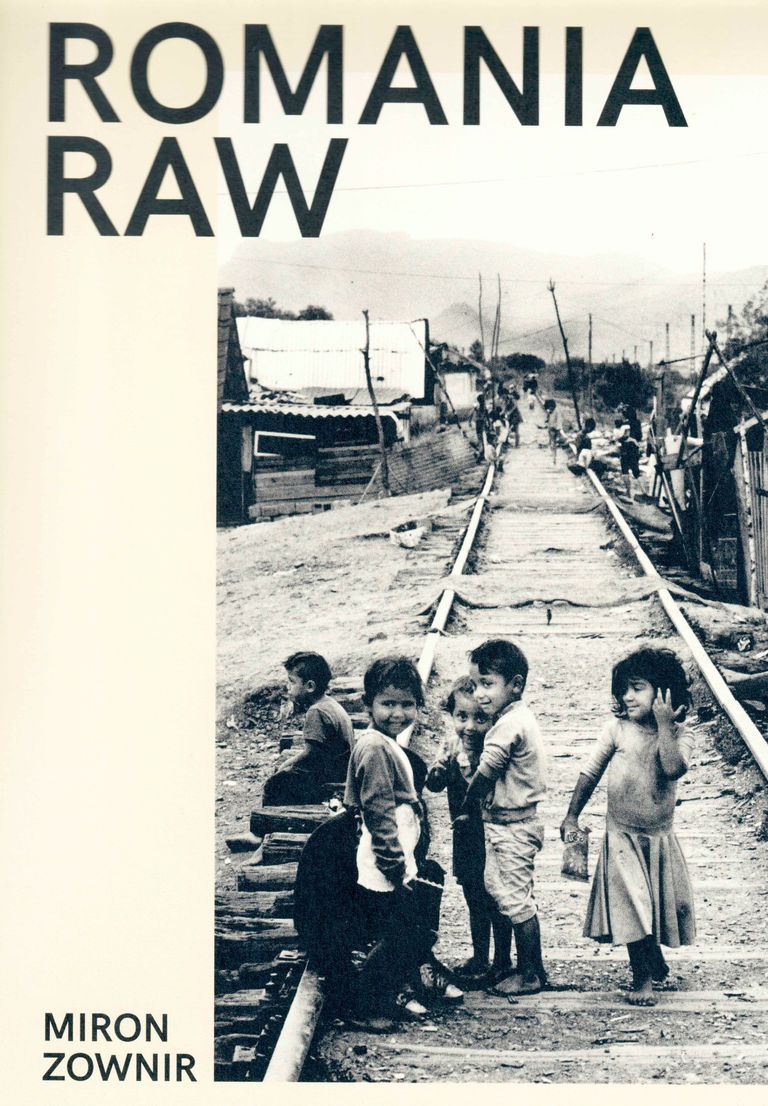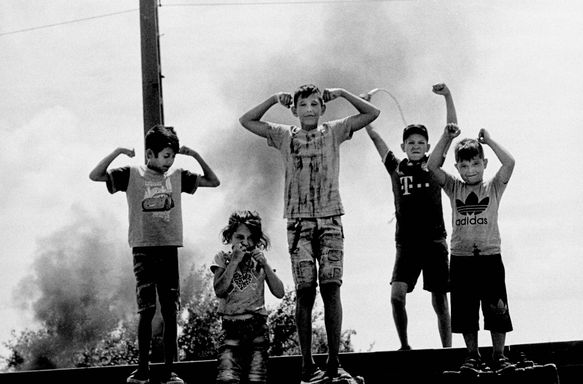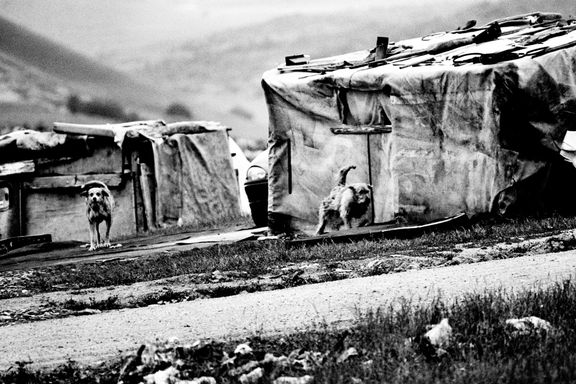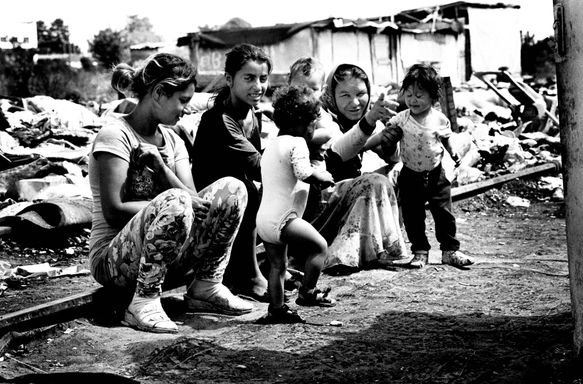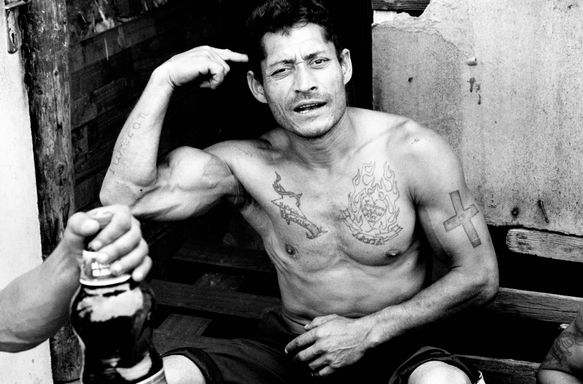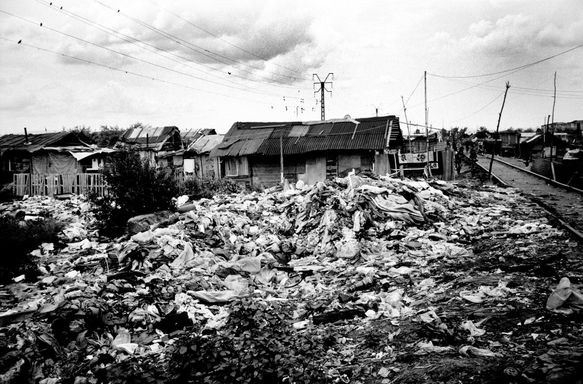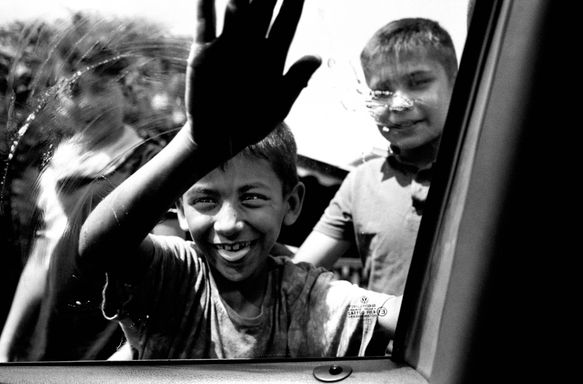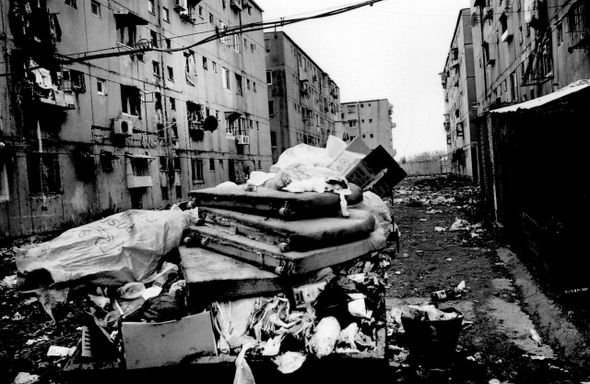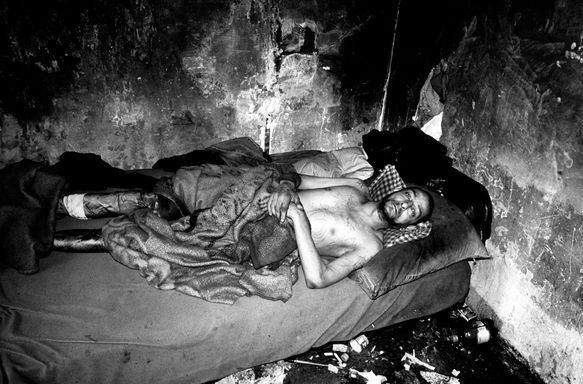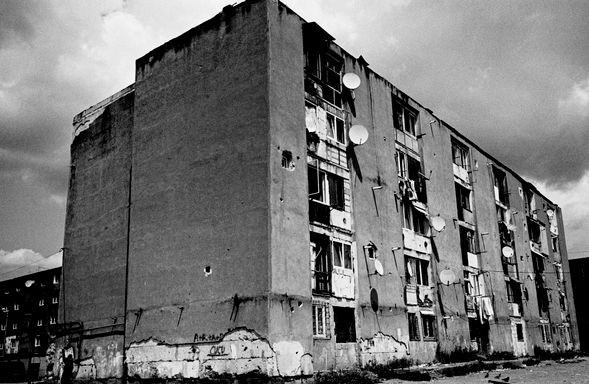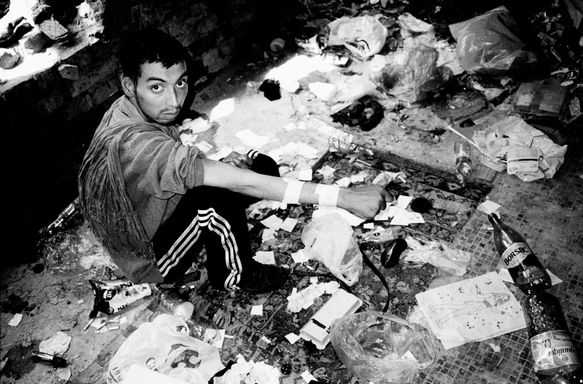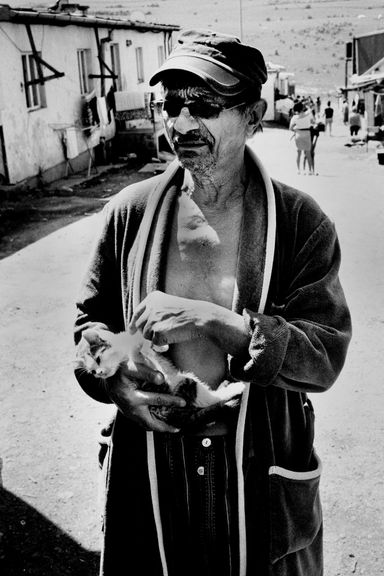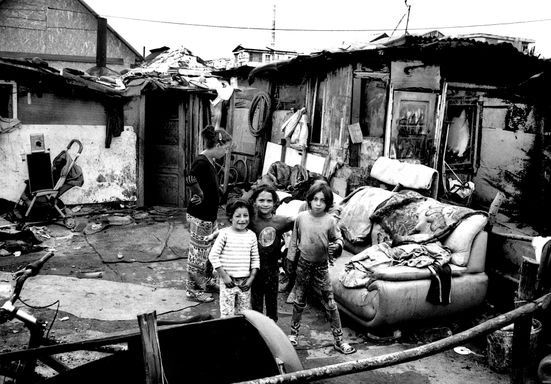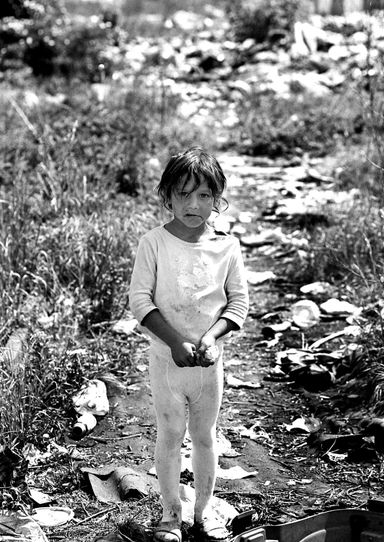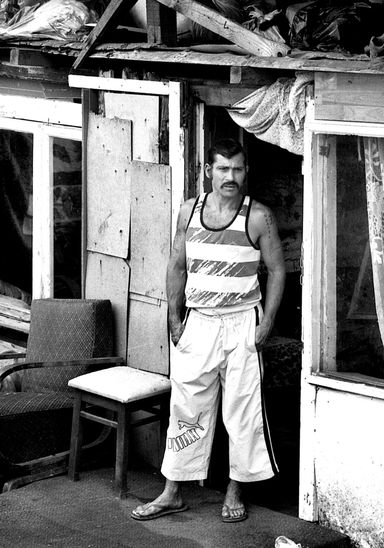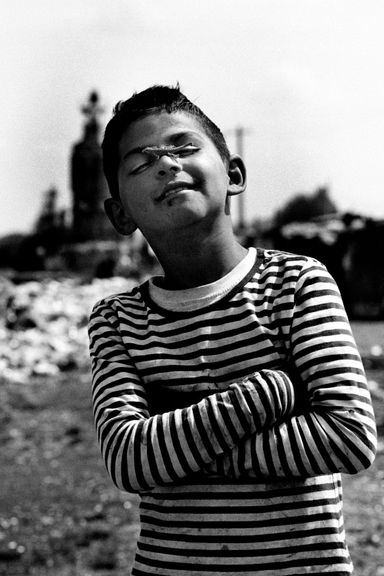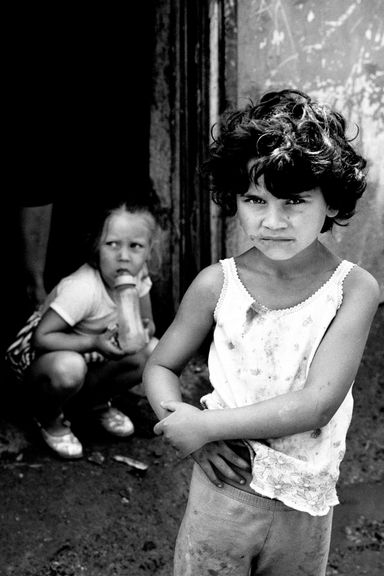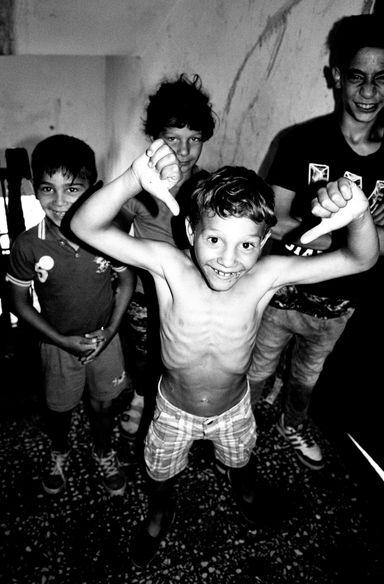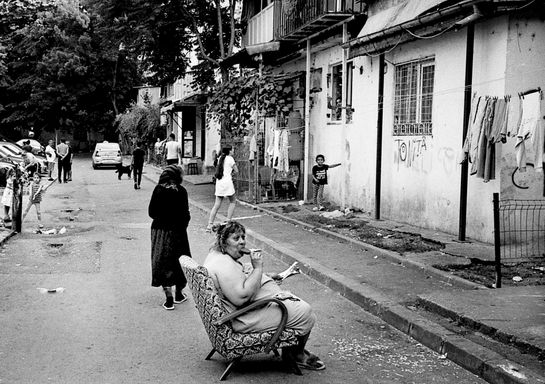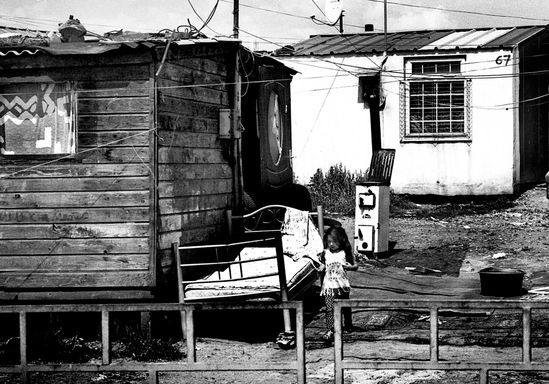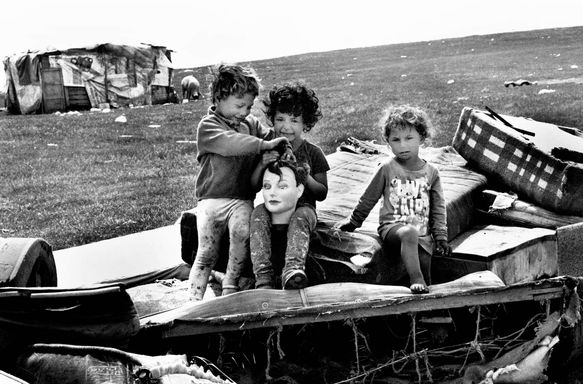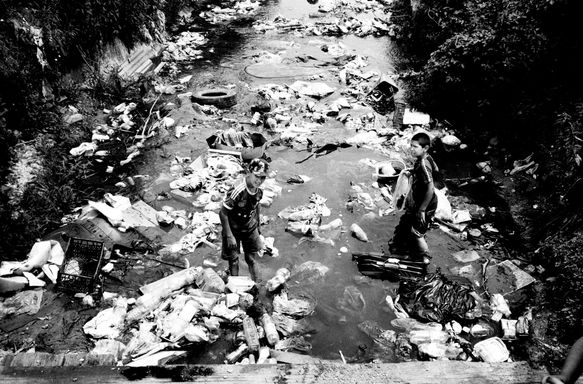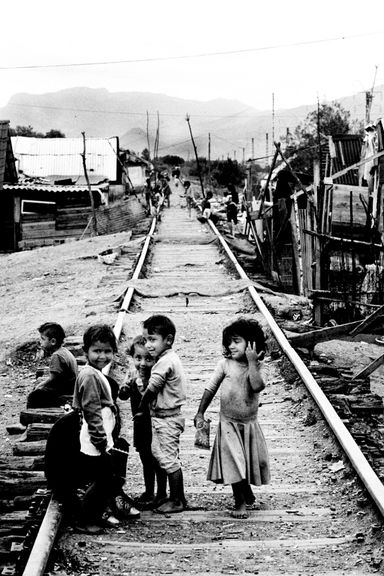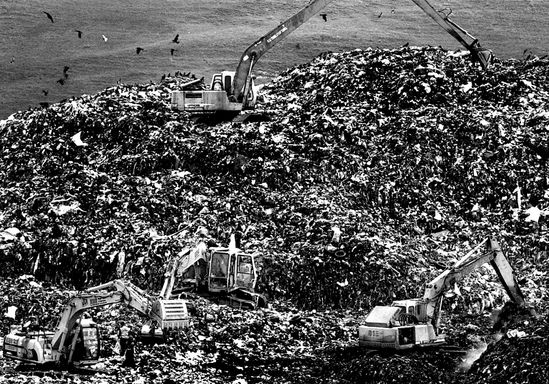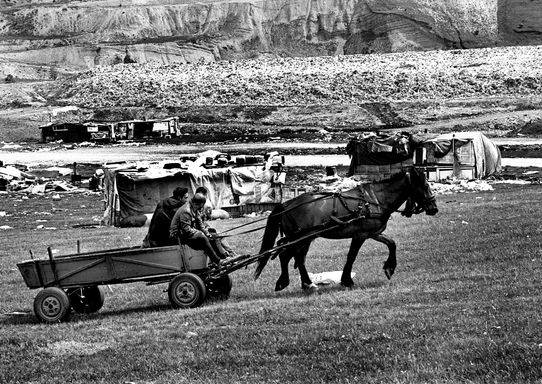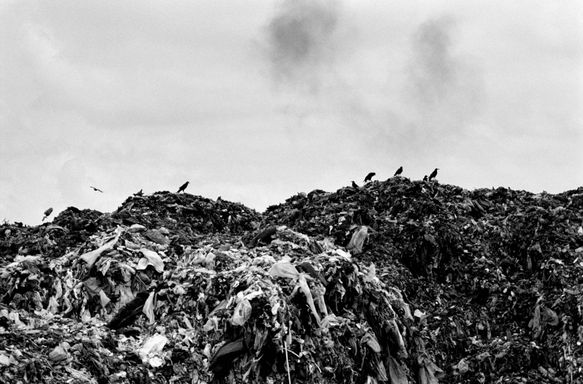ROMANIA 2018
Miron Zownirs Fotoserie ROMANIA RAW, die während einer Künstlerresidenz in Rumänien entstand, dokumentiert unter anderem die menschenunwürdigen Lebensumstände von Roma-Familien in der Nähe von Cluj Napoca, auf der ehemals größten Mülldeponie Europas und in den angrenzenden Ghettos.
Miron Zownir's photo series ROMANIA RAW, realised during his artist residency in Romania, documents, among other things, the inhumane living conditions of Roma families near Cluj Napoca on what was once Europe's largest landfill site and the close by ghettos.
Die Fotoserie Romania Raw entstand während einer Residenz in Rumänien zu der Miron Zownir 2018 von der Visual Kontakt Galerie in Kooperation mit dem Goethe-Zentrum Klausenburg eingeladen wurde. Der thematische Schwerpunkt seines Fotoprojektes lag in der Dokumentation der Lebensverhältnisse der Roma-Gemeinden in der Nähe von Cluj-Napoca in Transsilvanien.
Die ersten Roma, die in Pata Rât lebten, kamen in den späten 1960er und 1970er Jahren. Die Armut hatte sie hierhergetrieben. Auf der Müllhalde sortierten sie den städtischen Abfall, verdienten sich so ihren Lebensunterhalt. Die meisten Bewohner der Mülldeponie waren in den 2000er-Jahren aus Cluj-Napoca vertrieben worden. Damals erlebte die Stadt einen regelrechten Immobilienboom. Für die Roma war von da an kein Platz mehr. Vor den Toren der Stadt lebten seit dem ca. 1500 Menschen in Pata Rât, inmitten einer verseuchten Umwelt, ohne angemessene Wasser-, Abwasser- und Abfallentsorgung und ohne jegliche Perspektive.
Jahrzehntelang wurden auf der Deponie unbehandelte Abfälle verklappt, Chemikalien sickerten in den Boden. Offenbar ohne Rücksicht auf die Menschen und die Auswirkungen auf die Umwelt. Es kam zu Bränden, bei denen auch immer wieder Menschen starben. Rund 2,5 Millionen Tonnen Abfall sind in den vergangenen Jahrzehnten dort deponiert worden, auf einer Fläche so groß wie 27 Fußballfelder.
Die Deportation der Roma nach Pata Rât löste zwar immer wieder Proteste von Bürger- und Pro-Roma-Organisationen aus und auch die EU drängte zur Schließung von Pata Rât. 2015 begannen die Behörden mit Aufräumarbeiten und die lokalen Behörden erklärten die Mülldeponie 2019 offiziell für geschlossen, doch für die Roma, die hier lebten, ging das Leben in Pata Rât weiter, denn ab 2015 entstanden neben der alten großen Deponie zwei neue "Zwischenlager", mit neuen Müllbergen, die jeden Tag wachsen.
Miron Zownir's photo series from Romania was created during an artist residency in 2018, organised by the Visual Kontakt Gallery and supported by the Goethe-Zentrum Klausenburg. The thematic focus of his photo project ROMANIA RAW was the documentation of the living conditions of the Roma communities in Baia Mare and Pata Rât.
The first Roma to live in Pata Rât came in the late 1960s and 1970s. Poverty had driven them there. They sorted the municipal waste at the rubbish dump and earned their living that way. However, most of the residents of the landfill were expelled from Cluj-Napoca in the 2000s. At that time, the city experienced a veritable real estate boom. From then on there was no more room for the Roma.
Since then, around 1,500 people have been living in Pata Rât, in front of the city gates, in the midst of a contaminated environment, without adequate water, sewage and waste disposal and without any future prospects. For decades, waste was dumped in landfills, and chemicals seeped into the ground. Apparently without regard for people and the impact on the environment. There also were fires in which people died. Around 2.5 million tons of waste have been dumped there over the past few decades, on an area the size of 27 soccer fields.
The deportation of the Roma to Pata Rât repeatedly triggered protests from civil and pro-Roma organizations, and the EU also pushed for Pata Rât to be closed. In 2015 the authorities started to clean up and the local authorities officially declared the landfill closed in 2019, but for the Roma who lived here, life in Pata Rât went on, because from 2015 two new "intermediate storage facilities" were built next to the old large landfill. New mountains of garbage that grow every day.
„Die Kinder in Pata Rât spielen, essen, schlafen und träumen im Müll, ohne ein Minimum an hygienischen Lebensbedingungen. Arbeit finden sie, wenn sie Glück haben, als Tagelöhner auf der Mülldeponie. Alternativ bleibt ihnen oft nur der Drogensumpf, die Kriminalität und Prostitution.“
MIRON ZOWNIR
